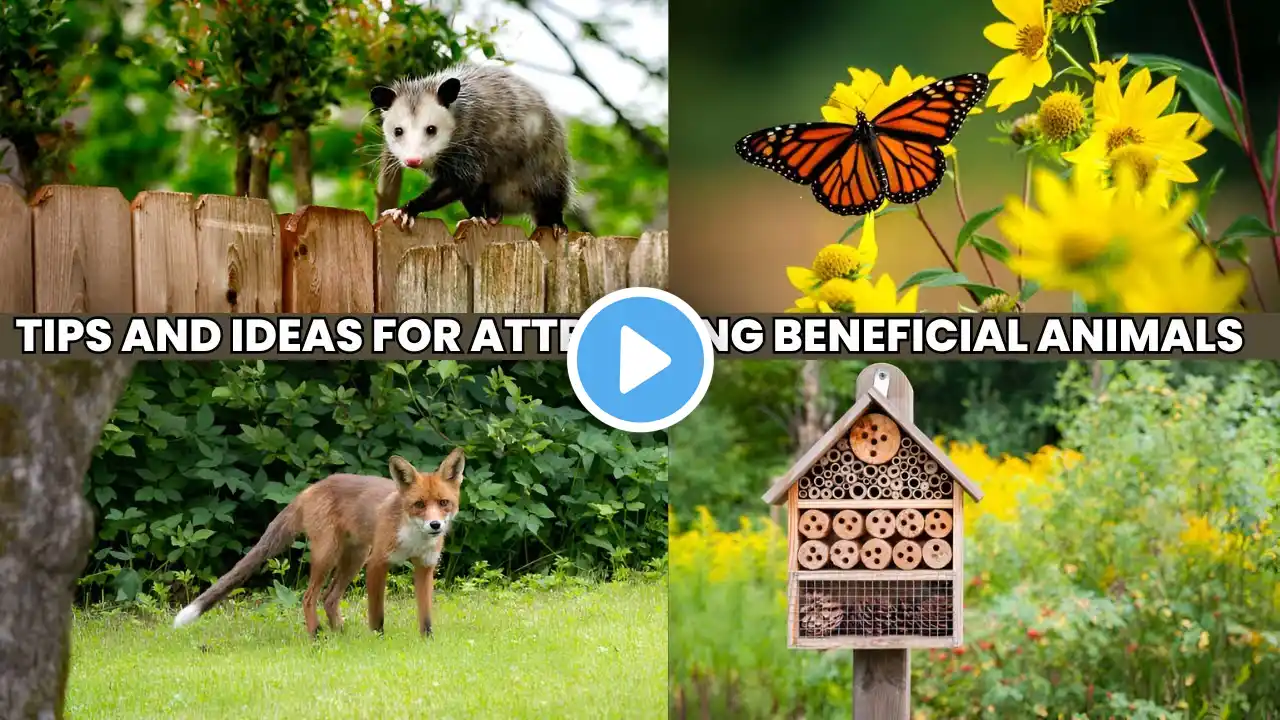
Garden Design for Wildlife Attracting and Supporting Birds, Bees, and Butterflies
Introduction Designing a garden that attracts and supports wildlife, such as birds, bees, and butterflies, enhances biodiversity and creates a vibrant, dynamic outdoor space. By incorporating native plants and providing essential resources like food, water, and shelter, you can transform your garden into a sanctuary for wildlife. This guide explores the principles of wildlife-friendly garden design, key elements, and practical tips for creating a habitat that welcomes a variety of species. Benefits of a Wildlife-Friendly Garden Ecological Balance **Biodiversity**: Supports a variety of species, promoting a healthy ecosystem. **Pest Control**: Natural predators help manage pest populations, reducing the need for chemicals. Environmental Sustainability **Conservation**: Provides habitats for endangered and declining species. **Pollination**: Bees and butterflies are crucial for pollinating plants, including many food crops. Personal Enjoyment **Wildlife Watching**: Offers endless opportunities to observe and enjoy wildlife. **Educational Value**: Provides a hands-on learning environment for children and adults. Key Elements of Wildlife-Friendly Garden Design Plant Selection Native Plants Native plants are adapted to local conditions and support local wildlife. **Birds**: Oak trees, elderberries, and sunflowers. **Bees**: Lavender, coneflower, and wildflowers. **Butterflies**: Milkweed, butterfly bush, and asters. Diversity Incorporate a variety of plants to provide year-round resources. **Trees and Shrubs**: Offer shelter, nesting sites, and food. **Flowers**: Provide nectar and pollen for bees and butterflies. **Grasses**: Offer seeds and nesting materials. Water Sources Provide clean water for drinking and bathing. **Birdbaths**: Ensure they are shallow and clean regularly. **Ponds**: Natural or artificial ponds with sloped sides for easy access. **Water Features**: Fountains and drippers can attract wildlife. Shelter and Nesting Sites Create safe places for wildlife to rest and raise their young. **Birdhouses**: Install species-appropriate birdhouses. **Bee Hotels**: Provide nesting sites for solitary bees. **Leaf Litter and Logs**: Offer habitat for insects and ground-dwelling creatures. Food Sources Supplement natural food with feeders. **Seed Feeders**: Attract a variety of bird species. **Nectar Feeders**: Attract hummingbirds and butterflies. **Fruit and Suet Feeders**: Provide high-energy food, especially in winter. Practical Tips for Creating a Wildlife-Friendly Garden Plan Your Layout **Layered Planting**: Use a variety of plant heights to create layers that mimic natural habitats. **Clusters**: Plant in clusters to provide more cover and foraging opportunities. Maintain Natural Elements **Leave Leaf Litter**: Provides habitat for insects and foraging ground for birds. **Dead Trees and Branches**: If safe, leave them as they offer nesting sites and food sources. Avoid Chemicals **Pesticides and Herbicides**: These can harm wildlife and reduce insect populations, which are crucial for many species. **Organic Practices**: Use organic gardening methods to maintain a healthy ecosystem. Seasonal Considerations **Winter Plants**: Include plants that provide winter food and shelter. **Migration Support**: Plant species that offer resources for migratory birds and butterflies. Conclusion Creating a wildlife-friendly garden is a rewarding way to support biodiversity and enjoy the beauty of nature. By choosing native plants, providing essential resources, and avoiding harmful chemicals, you can design a garden that attracts and supports birds, bees, and butterflies. Use these principles and practical tips to create a vibrant, sustainable habitat in your own backyard.





